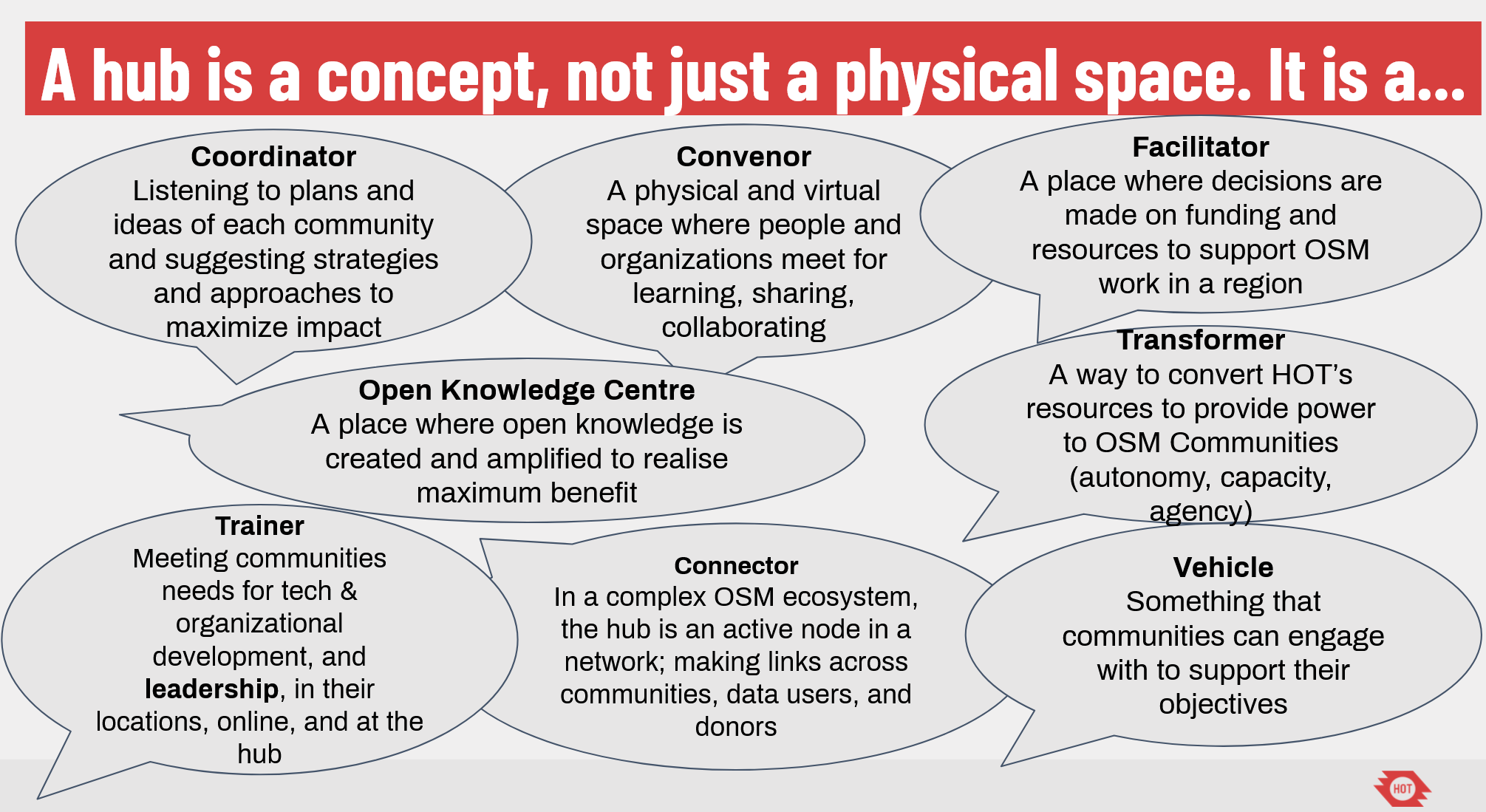Publicado por RebeccaF el 12 de febrero de 2021 en Inglés (English): osm.org/user/RebeccaF/diary/395774
Como continuación a mi última entrada en el diario, quería compartir más ideas sobre los principios y el propósito que están detrás de la nueva estructura de hubs regionales que HOT está estableciendo, así como continuar el diálogo y la evolución.
El propósito de una estructura de hubs regionales es proporcionar un apoyo cada vez más descentralizado al movimiento de OpenStreetMap; impulsar la evolución y el crecimiento de los ecosistemas de OpenStreetMap en países prioritarios a través de apoyo y liderazgo que sean contextualizados y adecuados.
Las primeras ideas sobre lo que debería ser un hub son

Y los principios iniciales:

